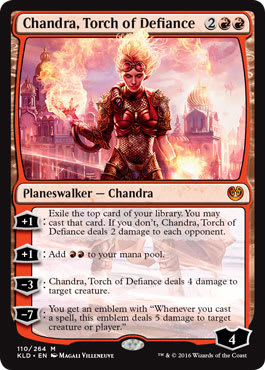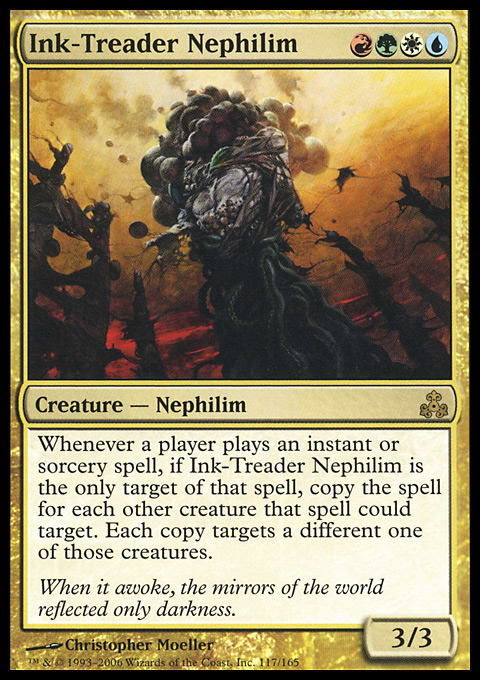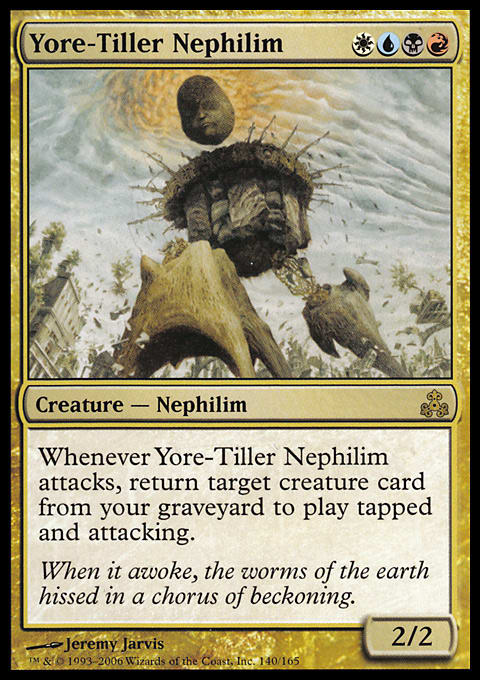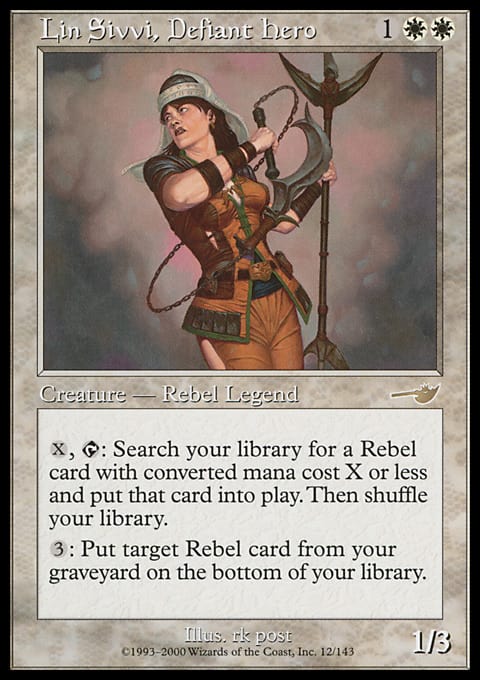See you in two weeks here on Gathering Magic Dot Com, when I talk probably about some novel like two of you have read and —
Oh, I'm being informed that my articles have to be more than two words long.
Well, in fairness to the color pie and in deference to my editors, I will note that Mark Rosewater, in his core description of Red, or in his more recent followup, never outright states that Red is the color of "rebellion" in so many words. It just happens to be the color that hates rules, order, constraints, anything that imposes on freedom, and so on, and takes every opportunity to fight those things with brute force and explosions. The word "rebellion" may not show up in MaRo's articles, but it's clearly a deep part of Red's identity.
This is why it makes so much sense that the rebellion on Kaladesh is being led by the Nalaars. The face of the rebellion is Red, with Chandra's fire serving as a symbol of creative freedom. This isn't the first time Chandra's flame has served as a symbol this way: its a narrative that's been around since The Purifying Fire when she and the pyromancers of Keral Keep went up against the imperialist, White-aligned Order of Heliud. Chandra makes a good poster child for Red because she not only embodies one of Red's elemental forces, she also embodies its rebellious nature.
Koth, therefore, makes for a solid mirror to Chandra, taking up the other side of Red's elemental palette — earth and stone — and being a core part of the Mirran resistance against New Phyrexia. And we can see that mirrored through countless other conflicts in the storyline, from the famous Red-aligned rebels on Mercadia, to the mono-Red Gateless movement on Ravnica, to the Red-aligned rebels on Rath who followed famous Red hero Eladamri in his charge on the Stronghold —
Oh, I'm being informed that none of those things except Koth are Red-aligned at all. Hm.
Well what can you do, the color pie was a bit weird back in the distant days of . . . um . . . 2012?
Look, the Gateless were a special case though. After all, the dominant power structure on Ravnica is characterized not by the dominance of one color, but by the dominance of ten guilds who through careful balancing of power can manage to make everyone else and each other utterly miserable for thousands of years! A rebellion against that structure naturally would not just be Red — as that impulse is carefully draw into the system via the Gruul — but would propose an entire alternate system. The Gateless for example are mono-color, primarily, resisting the dual-color dominance of the Guilds.
Similarly, though we know very little about the Cult of Yore, it seems to be an alternative to the Guilds that pushes beyond two color pairs into more polychromatic territory. The Cult of Yore, according to an old Matt Cavotta article (whose formatting is now, sadly, a little borked) worships the Nephilim, four color beings that certainly seem to fall radically outside the existing guild structure, and perhaps even outside our typical conceptualization of color balance.
So this rebellion is contextual! It may not fit into our sense of Red laying claim to rebellion, but it's a corner case.
Upon reflection, we can say pretty much the same thing about the rebels on Rath and Mercadia. Sure, this is a White or W/G rebellion, but we can square that with the color pie if we think about context.
The rebels on Rath and Mercadia are rebelling not because of a need for chaos and freedom of the individual, but because their entire communities, and more broadly multiple worlds, are being oppressed by, uh, actual robot hell. It makes sense that White, despite its law and order tendencies, would rebel against the Black-aligned Phyrexia. And make no mistake: Phyrexia, for all that people fixate on the domineering structure of the plane or the use of biotechnology and artifice, is Black above all else. Phyrexia is a plane dominated by egomania, the egomania of The Ineffable and of demons like Gix and Croag. Phyrexia's order is characterized primarily by a mad scramble for power, one that lays entire worlds to waste for personal ambition. It's natural that White rebels would oppose this.
That's not to say everything on these planes quite works. The Red-aligned faction on Mercadia is a bit of a thornier problem, for example, given that it includes a bunch of aristocrats and their savvy goblin handlers, who are themselves the pawns of Phyrexia. This . . . this is not something I can explain so well. On the one hand, a lot of this design just seems to be the kind of weird shenanigans you got back in the old days of Magic. On the other, there's certainly a lot that reads as Red in their setup: an upside-down mountain with non-euclidean geography ruled by hedonist nobles who are helpless without their goblin caretakers definitely screams "chaos and disorder." Again, if the dominant order is one characterized by chaos and wantonness, it's reasonable to have a White rebellion.
So, ok, it turns out that maybe rebellion can't be trivially locked into Red's slice of the color pie. That's kind of revealing, actually — rebellion, despite its surface level obvious placement in Red, spills out, overflows the boundaries set for it, fittingly enough, and in the process shows that those boundaries are way more conditional than might be convenient. Sure, these are conditional situations that aren't the abstract ideal . . . but then what is? The point of a platonic ideal is that you can't really get it to manifest in real life. The color pie seems to exist just one step outside of the actually existing . . . er, for whatever a made up magic system for a trading card game can be said to, like, "exist."
It's not that I don't think the color pie has value in broad terms as a design principle, it's just that dynamic and naturalistic narratives like the rebellions against the Guildpact or against the Stronghold and Mercadia smack hard against the brick wall of generalities like "rebellions are Red" more often than you'd really . . . want? Certainly more than you'd want in an infinite multiverse of infinite stories!
And yet, it's not like we've COMPLETELY broken free of the color pie. After all, for all that the rebels of Masques Block might be stealing rebellion from Red, they're doing so by fundamentally reasserting values from White's slice of the pie: community, the good of all, protection, healing, faith! And to pick another more recent example, one of our core viewpoint characters on Kaladesh is Yahenni, a Black-aligned character. Yahenni might be rebelling but they're doing so in a deeply Black way, one driven by personal frustration, by being pushed beyond their limit through the denial of the one thing every Aetherborn is entitled to: a meaningful death. And while Yahenni justifies to themself their vampirism through "White" logic — how much good might they do with a few more days of life? — their narrative makes it clear that even to their own mind this rings as hollow self-justification. Yahenni's internal struggle is grounded firmly in Black's domain of selfishness. That's good! This passing back and forth between apparent colors, and the contrast between different means and ends, makes for a more dynamic narrative.
This becomes an important site of tension in Magic's flavor, because there's a tug between the game demands — that the color pie be simple, balanced, and well-expressed on the cards enough that players can understand each color's themes — and the demands of narrative — that the storyline acknowledge complexity, diversity of ideas, and the wide array of motivations, personal quirks, and social forces that go into something like a rebellion.
It's worth talking about not just because I have to fill out my word count this week, but because the color pie does impact how we think about the world, if only because Magic fans love applying the color pie to things and using it as a tool for thinking through problems, sometimes even political problems. This is fine to an extent — the colors are metaphorical and poetic tools, and it's fun to play with hyperflexible mythologies — but it's important to recall that they are gaming abstractions, designed to convey relatively large amounts of information within small spaces.
It's important, in other words, to recognize that, like horoscopes and myers-briggs tests, the color pie shouldn't represent a kind of narrative destiny for any fiction, Magic's actual fiction included! The situational nature of rebellion in Magic is a good thing, because it serves as a reminder that the color pie, as useful as it is as a gaming abstraction, has to allow for flexibility if the stories are to be meaningful and naturalistic rather than formulaic and sitcom-y. And when we discuss the storyline in color pie terms, I think it's much more useful to ask why something might be a particular color than to simply discard anything that doesn't, in a kind of shallow way, conform to what we expect the color pie to do.
In short: when it comes to treating the color pie as a narrative tool, we should be just a little bit more Red.


































